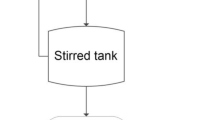Abstract
Sintering flue gas is the main source of air pollution in the iron and steel industry. Facing stringent emission standards set to limit the amount of flue gas pollutants, multi-pollutant control in sintering flue gas has become a necessity in the iron and steel industry. Utilizing biomass fuel with low S and N contents to replace a portion of coke in the sintering process can offer control at the source of sintering flue gas pollutants. This study is aimed at elucidating the reaction mechanism of mixed fuel in the sintering process using thermogravimetric experiments of the combustion and gasification reactions. The results show that the reaction performance of biomass fuel is better than that of coke. In addition, biomass fuel can improve the reaction performance of mixed fuel. When the content of biomass fuel increased from 20 to 80%, the temperatures of both the combustion and gasification reactions decreased, the weight loss rate of the mixed fuel increased, and the gap between the calculated and experimental values widened. By studying the reaction mechanism of mixed fuel, we found that the sintering fuel reactivity increases mainly because the porous structure of biomass fuel provides a large specific surface area for the combustion or gasification reaction, and the alkali metals, K and Na, in the biomass fuel act as catalysts to the reaction.








Similar content being viewed by others
References
Zhou H, Zhou M, Liu Z, Cheng M, Chen J (2016) Modeling NOx emission of coke combustion in iron ore sintering process and its experimental validation. Fuel 179:322–331
Adrados A, Marco ID, Solar J, Caballero BM (2015) Biomass pyrolysis solids as reducing agents: comparison with commercial reducing agents. Materials 9(1):3
Liu C, Zhang Y, Shi Y, Xing HW, Kang Y (2017) Numerical simulation of sintering based on biomass fuel. Ironmak Steelmak 5:1–8
Gan M, Fan X, Ji Z, Jinag T, Chen X (2014) Application of biomass fuel in iron ore sintering: influencing mechanism and emission reduction. Ironmak Steelmak 42:27–33
Fan X, Zhiyun JI, Min G, Jiang T, Chen X (2013) Application of biomass fuel in iron ore sintering. J Cent South Univ 44:1747–1753
Kawaguchi T, Hara M (2013) Utilization of biomass for iron ore sintering. ISIJ Int 53:1599–1606
Zandi M, Martinezpacheco M, Fray TAT (2010) Biomass for iron ore sintering. Miner Eng 23:1139–1145
Ooi TC, Thompson D, Anderson DR (2011) The effect of charcoal combustion on iron-ore sintering performance and emission of persistent organic pollutants. Combust Flame 158:979–987
Liu C, Zhang Y, Xing H, Kang Y (2017) Research on performance optimization of biomass fuel for sintering. J Northeast Univ (Nat Sci) 38:1716–1720
He R, Sato J, Chen Q, Chen C (2002) Thermogravimetric analysis of char combustion. Combust Sci Technol 174(4):1–18
Zhang DW, Guo PM, Pei ZHAO (2007) Kinetic study on boudouard reaction of carbon at low temperature. Iron Steel 42:13–16
Hecker WC, Madsen PM, Sherman MR, Allen JW, And RJS, Fletcher TH (2003) High-pressure intrinsic oxidation kinetics of two coal chars. Energy Fuels 17(2):427–432
Liu ZS, Wang Q, Zou ZS, Tan GL (2010) Non-isothermal thermogravimetric investigation on kinetics of coke gasification with CO2. Res Iron Steel 38:1–3
Sima-Ella E, Yuan G, Mays T (2005) A simple kinetic analysis to determine the intrinsic reactivity of coal chars. Fuel 84:1920–1925
Howaniec N, Smoliński A (2018) Properties of andropogon gerardi derived carbon materials. Materials 11:876
Li X, Hayashi JI, Li CZ (2006) Volatilisation and catalytic effects of alkali and alkaline earth metallic species during the pyrolysis and gasification of Victorian brown coal. Part VII. Raman spectroscopic study on the changes in char structure during the catalytic gasification in air. Fuel 85:1509–1517
He XM, Qin J, Liu RZ, Hu ZJ, Huang CJ (2013) Catalytic combustion of inferior coal in the cement industry by thermogravimetric analysis. Energy Sources 35(13):1233–1240
Acknowledgements
This research was funded by National Natural Science Foundation of China Grant Number [51874139].
Author information
Authors and Affiliations
Contributions
LC participated in experiments and drafted the manuscript. ZYZ conceived and designed the study, performed the statistical analysis, and modified the manuscript. ZK and XHW participated in sintering pot experiments. YAM and KY performed the statistical analysis. All authors read and approved the final manuscript.
Corresponding author
Ethics declarations
Conflict of interest
The authors declared that they have no conflict of interest.
Rights and permissions
About this article
Cite this article
Liu, C., Zhang, Y., Zhao, K. et al. Effect of biomass on reaction performance of sintering fuel. J Mater Sci 54, 3262–3272 (2019). https://doi.org/10.1007/s10853-018-3061-2
Received:
Accepted:
Published:
Issue Date:
DOI: https://doi.org/10.1007/s10853-018-3061-2



